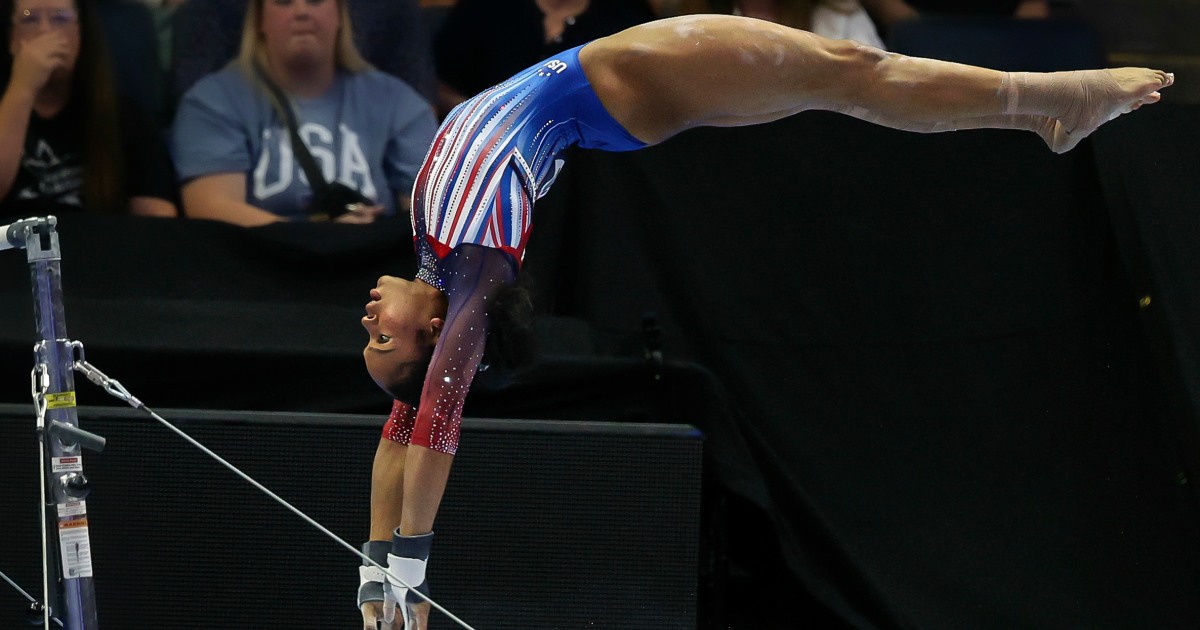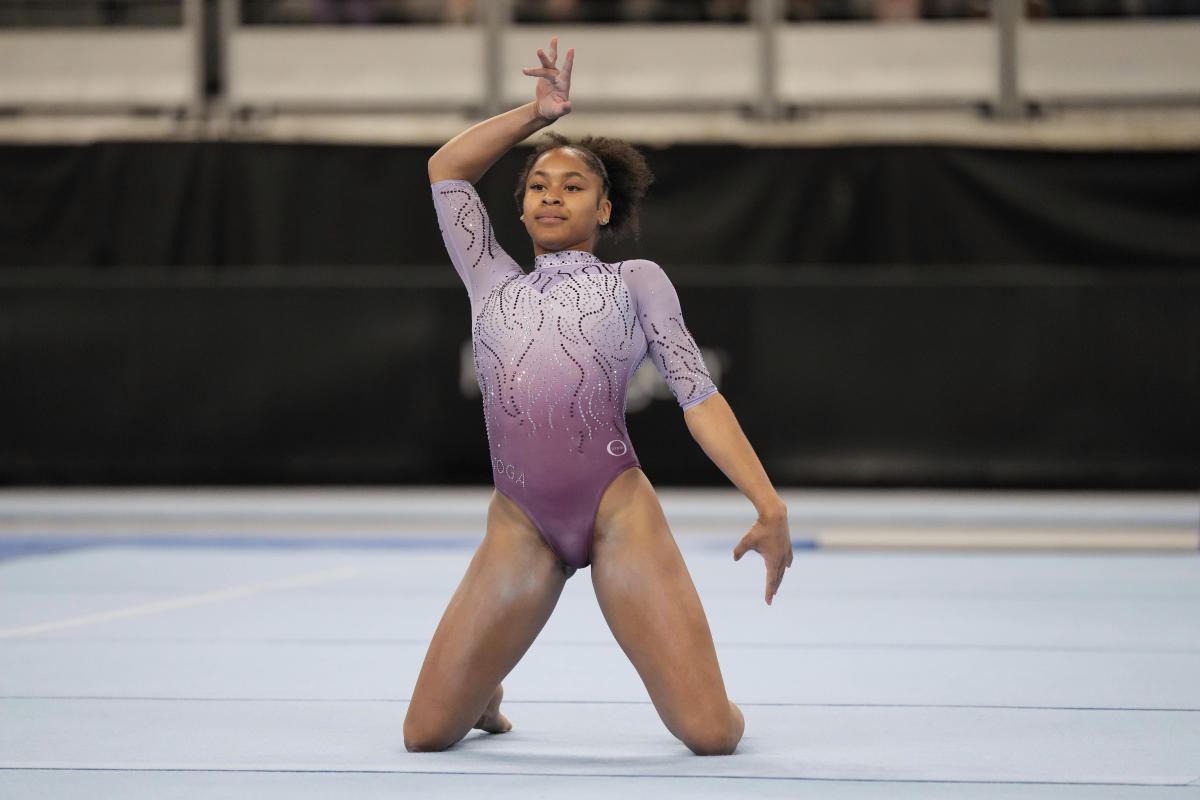Gymnastics Olympic Trials Injuries

Gymnastics olympic trials injury – Gymnastics is a physically demanding sport that requires athletes to perform complex and often dangerous maneuvers. As a result, injuries are common, especially during the Olympic trials, when athletes are competing for a spot on the Olympic team.
The gymnastics Olympic trials were marred by a spate of injuries, including a devastating one to Shilese Jones. The promising gymnast suffered a serious knee injury that has put her Olympic dreams on hold. Jones’ injury is a major blow to the US team, as she was a strong contender for a medal.
The Olympic trials have been a rollercoaster of emotions, with athletes pushing their bodies to the limit in pursuit of their dreams. Jones’ injury is a reminder of the risks involved in this demanding sport, and the sacrifices that athletes make to compete at the highest level.
The most common injuries in gymnastics are sprains, strains, and fractures. Sprains occur when a ligament is stretched or torn, while strains occur when a muscle or tendon is stretched or torn. Fractures occur when a bone is broken.
The physical demands of gymnastics contribute to the risk of injury. Gymnasts must be strong, flexible, and agile. They must also be able to perform complex maneuvers with precision and control.
Gymnastics Olympic trials injuries are a major concern for athletes vying for a spot on the Olympic team. These injuries can range from minor sprains and strains to more serious fractures and dislocations. The men’s gymnastics olympic trials are no exception, with several athletes suffering injuries in the lead-up to the competition.
Men’s gymnastics olympic trials are a grueling test of strength, agility, and endurance, and the risk of injury is always present. Fortunately, most gymnastics Olympic trials injuries are not career-ending, and athletes are able to recover and return to competition.
There are a number of things that gymnasts can do to prevent injuries. These include:
- Proper training techniques: Gymnasts should be taught proper training techniques by qualified coaches.
- Warm-ups: Gymnasts should always warm up before training or competition.
- Conditioning: Gymnasts should be in good physical condition.
Impact of Injuries on Olympic Trials Performance: Gymnastics Olympic Trials Injury

Injuries are a common occurrence in gymnastics, and they can have a significant impact on a gymnast’s performance at the Olympic trials. Injuries can range from minor strains and sprains to more serious injuries, such as fractures and dislocations. The severity of an injury will determine the extent to which it affects a gymnast’s performance.
Minor injuries may only cause a gymnast to miss a few days of training, while more serious injuries can sideline a gymnast for weeks or even months. This can make it difficult for a gymnast to maintain their fitness and prepare for the Olympic trials. In addition to the physical challenges, injuries can also have a psychological impact on gymnasts. Gymnasts who are injured may be afraid of re-injuring themselves, which can lead to anxiety and performance issues.
Role of Medical Staff and Coaches
The medical staff and coaches play an important role in supporting injured gymnasts. The medical staff can provide treatment and rehabilitation for injuries, while the coaches can help gymnasts to modify their training programs and provide emotional support. With the help of the medical staff and coaches, injured gymnasts can often recover from their injuries and return to competition.
Rehabilitation and Recovery for Gymnastics Injuries
Gymnasts who sustain injuries face a challenging road to recovery. The rehabilitation process is complex and requires a multidisciplinary approach involving medical professionals, physical therapists, and athletic trainers. The goal of rehabilitation is to restore the gymnast’s range of motion, strength, and coordination while minimizing the risk of re-injury.
Types of Therapies and Treatments, Gymnastics olympic trials injury
Gymnastics injury rehabilitation typically involves a combination of therapies and treatments, including:
- Rest and immobilization: In the acute phase of an injury, rest and immobilization are essential to allow the tissues to heal.
- Physical therapy: Physical therapists use exercises and modalities to improve range of motion, strength, and flexibility.
- Occupational therapy: Occupational therapists help gymnasts regain functional skills, such as dressing and eating, that may have been affected by their injury.
- Massage therapy: Massage can help reduce pain, improve circulation, and promote relaxation.
- Acupuncture: Acupuncture is a traditional Chinese medicine technique that involves inserting thin needles into the skin at specific points on the body. It is believed to help relieve pain and promote healing.
- Surgery: In some cases, surgery may be necessary to repair damaged tissues or reconstruct ligaments or tendons.
Challenges and Timelines
Recovering from gymnastics injuries can be challenging and time-consuming. The severity of the injury, the gymnast’s age, and their overall health will all affect the rehabilitation timeline.
- Pain: Pain can be a significant barrier to rehabilitation, making it difficult for gymnasts to perform exercises and progress through their recovery.
- Swelling: Swelling can also limit range of motion and make it difficult to perform exercises.
- Scar tissue: Scar tissue can form after an injury, which can restrict movement and cause pain.
- Psychological factors: Injuries can also have a psychological impact on gymnasts, leading to fear, anxiety, and depression.
The timeline for recovery from a gymnastics injury varies depending on the severity of the injury. Minor injuries may take a few weeks to heal, while more serious injuries may take months or even years to recover from. It is important for gymnasts to be patient and realistic about their recovery timeline and to work closely with their medical team to achieve the best possible outcome.
